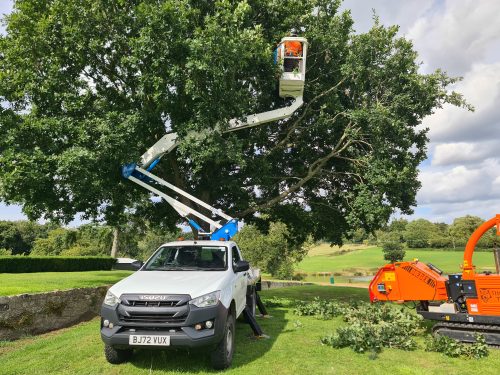 https://www.wilsontreesurgery.com/wp-content/uploads/2024/09/20230807_162313-500x375.jpg
https://www.wilsontreesurgery.com/wp-content/uploads/2024/09/20230807_162313-500x375.jpg
Machinery used in utility arboriculture
Read more
by Wilson Tree Surgery |
In spring, trees undergo several significant changes as they transition from winter dormancy to active growth. Here are some key processes that happen to trees during spring:
Bud Break: As temperatures rise and daylight lengthens, trees begin to break dormancy. This is marked by the swelling and eventual bursting of buds, which contain new leaves and shoots. Bud break varies depending on the tree species and local climate conditions.
Leaf Emergence: With bud break, new leaves emerge from the buds. These leaves are essential for photosynthesis, the process by which trees produce food (sugars) using sunlight, carbon dioxide, and water.
Flowering: Many tree species flower in the spring. This is a crucial phase for reproduction, as flowers produce pollen, which is transferred between trees by wind, insects, or other means to facilitate fertilisation.
Shoot Growth: Alongside leaves, new shoots grow from branches. These shoots elongate rapidly as they reach for sunlight and nutrients.
Root Growth: While above-ground growth is more visible, spring also sees increased activity in tree roots. Roots grow to explore soil for water and nutrients, providing stability to the tree and facilitating water uptake.
Photosynthesis: With the emergence of new leaves, trees ramp up their photosynthetic activity. This process is crucial for producing the energy necessary for growth and maintenance throughout the growing season.
Transpiration: As temperatures rise, trees undergo transpiration, the process by which water moves from the roots, through the tree, and eventually evaporates from the leaves. Transpiration helps regulate tree temperature and maintains a flow of water and nutrients from roots to leaves.
Overall, spring marks a period of renewed activity and growth for trees, as they harness energy from the sun and resources from the soil to support their development throughout the growing season.
 https://www.wilsontreesurgery.com/wp-content/uploads/2024/09/20230807_162313-500x375.jpg
https://www.wilsontreesurgery.com/wp-content/uploads/2024/09/20230807_162313-500x375.jpg
Read more
 https://www.wilsontreesurgery.com/wp-content/uploads/2024/09/AdobeStock_475873508-500x333.jpeg
https://www.wilsontreesurgery.com/wp-content/uploads/2024/09/AdobeStock_475873508-500x333.jpeg
Read more
 https://www.wilsontreesurgery.com/wp-content/uploads/2024/09/pexels-valiphotos-589802-500x333.jpg
https://www.wilsontreesurgery.com/wp-content/uploads/2024/09/pexels-valiphotos-589802-500x333.jpg
Read more